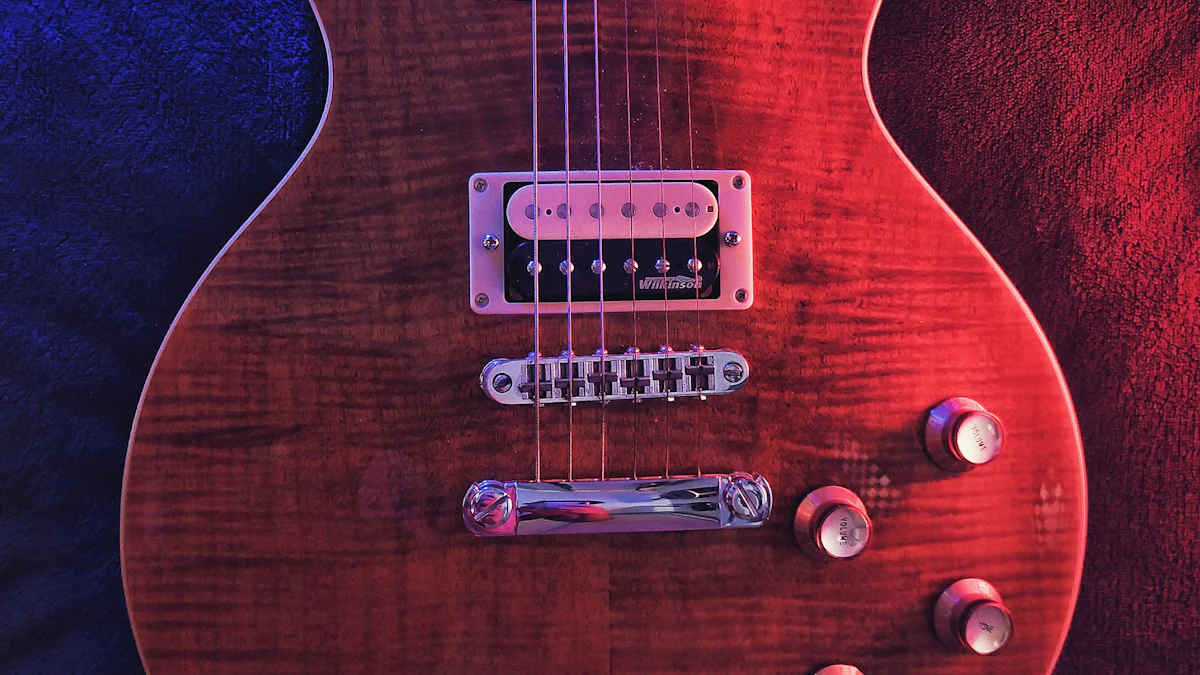
Musical instruments have been a part of human culture for centuries. These instruments create the sounds that fill our lives with joy and emotion. Understanding different types of musical instruments can enrich your appreciation of music. The global market for these instruments is booming, projected to reach a whopping $11.4 billion by 2025. This growth highlights the importance of knowing what makes each instrument unique. Whether you’re a musician or just a music lover, diving into the world of musical instruments opens up a whole new realm of sound and creativity.
Percussion Instruments

Percussion instruments bring rhythm and excitement to music. You can find percussion in almost every musical genre. These instruments are the backbone of many ensembles. Drums, cymbals, and maracas are just a few examples. The sound of percussion instruments can be loud or soft. Musicians use them to create beats and rhythms that make you want to move.
Characteristics of Percussion Instruments
Percussion instruments have unique features. Musicians produce sound by striking, shaking, or scraping them. The material of the instrument affects the sound. Wood, metal, and skin are common materials. Each material gives a different tone. The size of the instrument also matters. Larger instruments usually produce lower sounds.
Sound Production Methods
Sound production in percussion instruments is fascinating. Striking is the most common method. You can use sticks, mallets, or hands. Shaking creates sound in instruments like maracas. Scraping involves rubbing a stick against a surface. Each method produces a distinct sound. Musicians choose methods based on the music’s needs.
Examples of Percussion Instruments
The world of percussion instruments is vast. Drums are the most popular. You have snare drums, bass drums, and tom-toms. Cymbals add a metallic crash to music. Xylophones produce melodic tunes. Maracas and tambourines add a festive touch. Each instrument has a unique role in music.
Subcategories of Percussion Instruments
Percussion instruments fall into two main subcategories. Membranophones and idiophones are the primary types. Each has its own characteristics and uses.
Membranophones
Membranophones have a stretched membrane. Drums are the best example. The membrane vibrates to produce sound. You can change the pitch by tightening or loosening the membrane. Membranophones are versatile in music.
Idiophones
Idiophones produce sound through the material itself. No membrane is involved. Examples include xylophones and cymbals. Striking or shaking makes them vibrate. Idiophones often add texture to music. You can find them in orchestras and bands.
Woodwind Instruments
Woodwind instruments bring a unique charm to music. These instruments create sound through the vibration of air. You find woodwinds in orchestras and bands. The sound can be soft and gentle or bright and lively. Musicians love the versatility of woodwind instruments.
Characteristics of Woodwind Instruments
Woodwind instruments have distinct features. The body is usually a long tube. Holes along the tube help change the pitch. Musicians cover and uncover these holes with fingers or keys. The material of the instrument affects the sound. Wood, metal, and plastic are common materials.
Sound Production Methods
Sound production in woodwind instruments involves air. Musicians blow air into the mouthpiece. The air vibrates inside the tube. The length of the tube changes the pitch. Shorter tubes produce higher sounds. Longer tubes create lower sounds. The method of blowing also affects the tone.
Examples of Woodwind Instruments
The world of woodwind instruments is diverse. Clarinets and saxophones are popular choices. Flutes offer a sweet and clear sound. Oboes and bassoons add depth to music. Each instrument has a special place in an ensemble. Musicians choose based on the desired sound.
Subcategories of Woodwind Instruments
Woodwind instruments divide into three main subcategories. Each type has unique characteristics.
Single-reed Instruments
Single-reed instruments use a single piece of cane. The reed vibrates when air passes over it. Clarinets and saxophones belong to this group. The sound is rich and full. Musicians enjoy the expressive quality of single-reed instruments.
Double-reed Instruments
Double-reed instruments use two reeds tied together. The reeds vibrate against each other. Oboes and bassoons are examples. The sound is warm and reedy. Double-reed instruments add a unique texture to music.
Flutes
Flutes produce sound without reeds. Musicians blow air across an opening. The air splits and vibrates inside the tube. The sound is light and airy. Flutes often carry the melody in an ensemble. The simplicity of flutes makes them popular.
String Instruments

String instruments bring a rich and melodic sound to music. You find these instruments in orchestras, bands, and solo performances. The sound of string instruments can be soothing or powerful. Musicians love the versatility and expressiveness of strings.
Characteristics of String Instruments
String instruments have unique features. The body usually consists of wood or metal. Strings stretch across the body. Musicians produce sound by vibrating the strings. The length and tension of the strings affect the pitch. Shorter strings create higher sounds. Longer strings produce lower sounds. The material of the strings also influences the tone.
Sound Production Methods
Sound production in string instruments involves vibration. Musicians use different methods to create sound. Bowing involves dragging a bow across the strings. Plucking uses fingers or picks to pull the strings. Striking involves hitting the strings with hammers. Each method produces a distinct sound. Musicians choose methods based on the music’s needs.
Examples of String Instruments
The world of string instruments is diverse. Violins and cellos are popular choices. Guitars offer a wide range of sounds. Harps add a heavenly touch to music. Pianos provide both melody and harmony. Each instrument has a special place in an ensemble. Musicians choose based on the desired sound.
Subcategories of String Instruments
String instruments divide into three main subcategories. Each type has unique characteristics.
Bowed Strings
Bowed strings use a bow to create sound. The bow rubs against the strings. Violins and cellos belong to this group. The sound is smooth and continuous. Musicians enjoy the expressive quality of bowed strings.
Plucked Strings
Plucked strings use fingers or picks. The strings vibrate when plucked. Guitars and harps are examples. The sound is crisp and clear. Plucked strings add rhythm and melody to music.
Struck Strings
Struck strings use hammers to create sound. The hammers hit the strings. Pianos are the best example. The sound is dynamic and versatile. Struck strings provide both melody and accompaniment.
Brass Instruments
Brass instruments bring a bold and powerful sound to music. You find these instruments in orchestras, bands, and solo performances. The sound of brass instruments can be majestic or playful. Musicians love the dynamic range and expressiveness of brass.
Characteristics of Brass Instruments
Brass instruments have unique features. The body consists of metal tubes. Musicians produce sound by vibrating their lips against a mouthpiece. The length and shape of the tube affect the pitch. Longer tubes create lower sounds. Shorter tubes produce higher sounds. The material of the instrument also influences the tone.
Sound Production Methods
Sound production in brass instruments involves lip vibration. Musicians use the proper embouchure to initiate sound. The instrument selects a frequency as the fundamental note. Higher frequency overtones extend into the bell region. Mutes can change the volume and timbre. Mutes add extra frequencies, altering the instrument’s character.
Examples of Brass Instruments
The world of brass instruments is diverse. Trumpets and trombones are popular choices. French horns offer a rich and mellow sound. Tubas add depth to music. Each instrument has a special place in an ensemble. Musicians choose based on the desired sound.
Subcategories of Brass Instruments
Brass instruments divide into two main subcategories. Each type has unique characteristics.
Valved Brass
Valved brass instruments use valves to change pitch. Valves detour air through extra tubing. Trumpets and tubas belong to this group. The sound is versatile and expressive. Musicians enjoy the flexibility of valved brass.
Slide Brass
Slide brass instruments use slides to alter pitch. Slides change the length of the tube. Trombones are the best example. The sound is smooth and continuous. Slide brass adds a unique texture to music.
Keyboard Instruments
Keyboard instruments bring a world of melody and harmony to music. These instruments have been around for centuries, offering a wide range of sounds and styles. You can find keyboard instruments in orchestras, bands, and solo performances. The versatility of keyboards makes them a favorite among musicians.
Characteristics of Keyboard Instruments
Keyboard instruments have unique features. A row of levers, known as keys, allows musicians to produce sound. Each key corresponds to a specific note. The layout of the keys helps musicians play complex pieces with ease. The material of the instrument influences the sound. Wood, metal, and electronic components are common materials.
Sound Production Methods
Sound production in keyboard instruments varies. Acoustic keyboards, like pianos, use hammers to strike strings. The vibration of the strings creates sound. Organs push air through pipes to produce notes. Electronic keyboards generate sound using digital technology. Each method offers a distinct sound. Musicians choose based on the desired effect.
Examples of Keyboard Instruments
The world of keyboard instruments is vast. Pianos are the most popular choice. Grand pianos and upright pianos offer rich and dynamic sounds. Organs provide a majestic and powerful tone. Synthesizers and digital pianos offer a wide range of sounds and effects. Each instrument has a special place in music. Musicians select based on their style and preference.
Subcategories of Keyboard Instruments
Keyboard instruments divide into two main subcategories. Each type has unique characteristics.
Acoustic Keyboards
Acoustic keyboards rely on physical mechanisms to produce sound. Pianos and organs belong to this group. The sound is natural and resonant. Acoustic keyboards offer a tactile playing experience. Musicians enjoy the expressive quality of acoustic keyboards.
Electronic Keyboards
Electronic keyboards use digital technology. Synthesizers and digital pianos are examples. The sound is versatile and customizable. Electronic keyboards offer a wide range of tones and effects. Musicians appreciate the flexibility of electronic keyboards.
Musical instruments offer a world of diversity and richness. Each type brings its own charm and character to music. Exploring these instruments can open new avenues for creativity and expression. Musicians often find joy in discovering the unique sounds each instrument produces.
Anne, a renowned instrument maker, once said, “Your instruments allow present and future musicians to create beautiful music that makes the world a better place.”
Take the time to appreciate the craftsmanship and artistry behind every instrument. Dive into the world of musical instruments and let the melodies inspire you.



